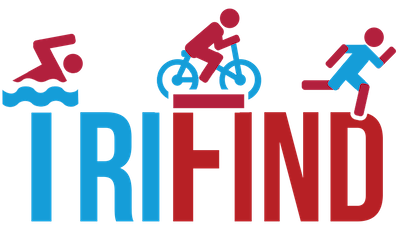Re-Energize: Maximizing Your Recovery All Year Long
Nov 06, 2008
Remember, no matter how many miles you bike or trails you run, if you are injured, you will not be able to perform the activities you most enjoy. Therefore, rest is essential for allowing your body to restore and recover between training bouts and regenerating into a fit athlete. Recovery can mean many different things with as many ways to incorporate it into your routine.
To achieve peak performance while staying healthy, its important to find an appropriate balance between training stress and recovery. Constantly training at a hard pace can cause disrupted sleep, mental burnout or lack of motivation, an increased resting heart rate, irregular eating habits and body weight and poor performancenot to mention illness and injury.
COOL DOWN
All workouts should end with an active cool down. Low-intensity aerobic activity clears lactic acid and decreases the severity of delayed onset muscle soreness. The efficiency and quality of the recovery process is improved by the delivery of oxygen and nutrients to damaged tissue. Aquatic-based training, light jogging or cycling are all effective activities for a cool down. Static stretching can be included in this process as well.
SELF MASSAGE
Biofoam rollers and massage sticks are a cost effective way to help sore, achy or stiff muscles recover from exercise. Lengthy, more sweeping strokes are typically used on long muscle groups while smaller directed pressure can be applied to smaller muscle groups to minimize muscle density on a daily basis. Denser biofoam rollers are recommended for larger-muscled individuals while a less dense foam will be adequate for a smaller individual for all muscle groups.
POST EXERCISE FUEL
The goal of post-exercise nutrition is to restore muscle and liver glycogen stores, improve hydration and repair muscle tissue. Timing is everything. What you eat is as important as when you eat. This is particularly important for individuals who train or work out daily. You should eat 15 to 30 minutes after exercise, preferably as soon as possible, when the muscles are most receptive to fuel. What to eat? Aim for something with 50 to 100 grams of carbohydrates, like a banana with a bagel, a half cup of raisins with a slice of bread, low fat cottage cheese with fruit, dried fruit and nuts, or two cups of orange juice with a cup of yogurt. Muscle replenishment and tissue repair can be accelerated if you combine your carbohydrate and protein together in a ratio of 4 to 1.
HYDRATION
Stay hydrated by consuming at least 24 ounces per pound of body weight lost within six hours after exercise. Weighing yourself before and after exhaustive exercise is important for determining how much water you lost. Thirst is a poor indicator of hydration. By the time you are thirsty you may already be dehydrated. Performance begins to decrease after only a 2 percent loss in body water. Check your urine color. It should look like weak lemonade. Many fruits such as grapes, cherries, melon, apples, celery, tomatoes, and blueberries provide both carbohydrates for restoration while rehydrating, thanks to their high water content. If you are engaging in an activity for more than four hours you have to remember to replace your electrolytes. This eliminates all risk of hyponatremia, which is too low of a sodium concentration in the blood plasma. Fluids filled with carbohydrates (sports drinks such as Gatorade or Powerade) will help refuel the body while rehydrating and providing essential electrolytes.
EMOTIONAL AND RELAXATION STRATEGIES
Some believe that the emotional domain is the most significant area of total fitness. They believe that emotionally strong individuals have a high capability for managing physical loads with enjoyment and competence. The ability to maintain composure during a mass open water swim start or during transition of a triathlon are just a couple areas where having emotional intelligence will result in lower levels of emotional stress. Developing relaxation strategies is each persons own preference and choice. Activities that help you disassociate from physical exercise while developing positive mood states of happiness, calmness, and tension reduction are best. Watching movies, spending time with family, reading, listening to music or socializing with friends can all be effective when used appropriately.
PSYCHOLOGICAL STRATEGIES
The focus and commitment required to train daily places the body under a degree of psychological stress. Take relaxation breaks from rigid training by incorporating cross training during the off season to prevent burnout. Vary workouts. Winter triathlon which includes cross country skiing, mountain biking and snowshoeing, weight training to improve strength and yoga are just a few outlets to rejuvenate while maintaining fitness.
SLEEP
Arguably the most overlooked aspects of recovery, quantity and quality of sleep are important. Individuals who are physically active on a regular basis have an increased need for total sleep time and are encouraged to aim for 8 to 9.5 hours of sleep each night. Restful sleep is required for physiological growth and repair to revitalize the body, while sleep deprivation can compromise cardiovascular performance by up to 20 percent. Lack of sleep also reduces reaction time, the ability to process information and emotional stability. Take our sleep quiz online to find out if you need more sleep.
CONCLUSION
Training is part of a healthy lifestyle that should be fun and positive. Using these strategies and making them your own will help keep you healthy while rejuvenating your spirit, mind, and body.


